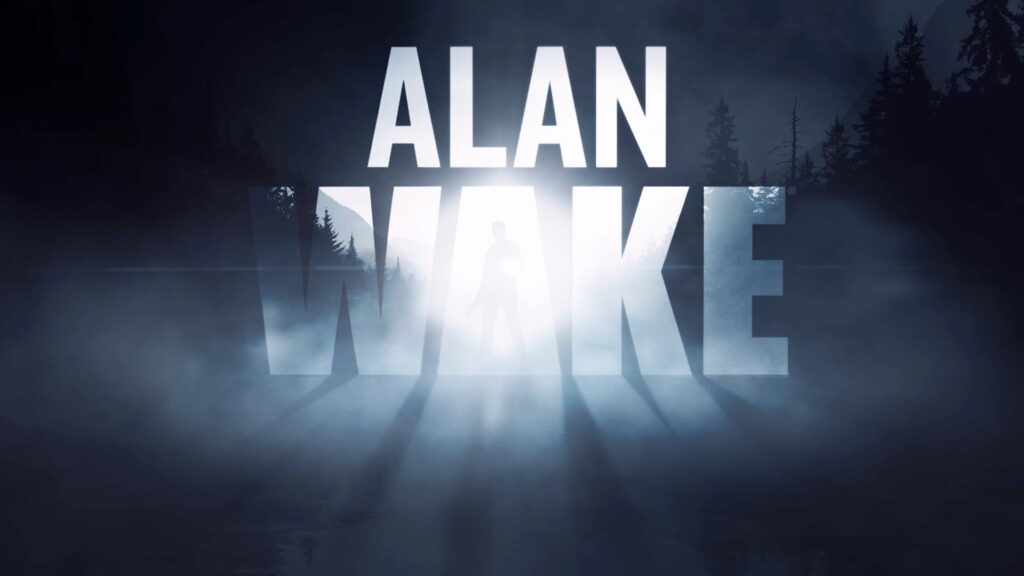
The seventh console generation saw the rise of story-driven action games. Remedy Entertainment already having been a trail-blazer in that arena with Max Payne and its sequel; which told a gritty crime drama using third-person shooting and popularized bullet-time in games.
After Max Payne 2, Remedy Entertainment sought to expand on their brand of story-telling by exploring the horror genre. Alan Wake was initially going to be much more ambitious than what we got; boasting an expansive open-world set in Bright Falls. What we ultimately got was something closer to what they were more experienced in with their past games.
The final product was not a sand box game, but did boast impressive vast linear levels. Compounded with the hard-boiled writing style that evokes Stephen King homages and John Carpenter’s In the Mouth of Madness, Remedy’s Xbox 360 opus was destined to be a cult hit.
Alan Wake
Developer: Remedy Entertainment
Publisher: Microsoft Game Studios
Platforms: Windows PC, Xbox 360, Xbox One (via backwards compatibility, reviewed)
Release Date: May 18, 2010
Players: 1
Price: $19.99

For being over a decade old, Alan Wake still feels very modern. Originally released just before the big boom of the “narrative driven” trend took off, the story and how it is told is still ambitious.
This is a psychological thriller that focuses on an author who is suffering from writer’s block, and battles a living darkness while trying to save his wife. What transpires is a surreal meta-epic, where the protagonist may or may not be the avatar of the game’s designer.
Impressively, Alan Wake manages to not feel like a long hallway of arbitrary arenas and set-pieces with cutscenes separating them. Thanks to enormous and wide-open and sprawling levels, Bright Falls and the woods surrounding it has a profound sense of place.

If there was any knock against the setting; it would be how every main level is primarily set in a dark and gloomy forest. In all fairness, Alan Wake does have some of the best forest levels ever created. Each area is dense with atmosphere, and disorienting fog that plays tricks on you.
It might look like you see some moving figures in the distance, but it was merely a trick from the designers. Then Alan actually does get smacked in the back of his head by some heartless lumberjack, and then you realize it wasn’t an illusion at all.
The lack of variety is not limited to the environments; it applies to the enemies too. The story of Alan Wake revolves around a darkness that can consume the living. Kind of like in Kingdom Hearts, but more serious. Most of the enemies are either deadites, a murder of crows, or random objects.
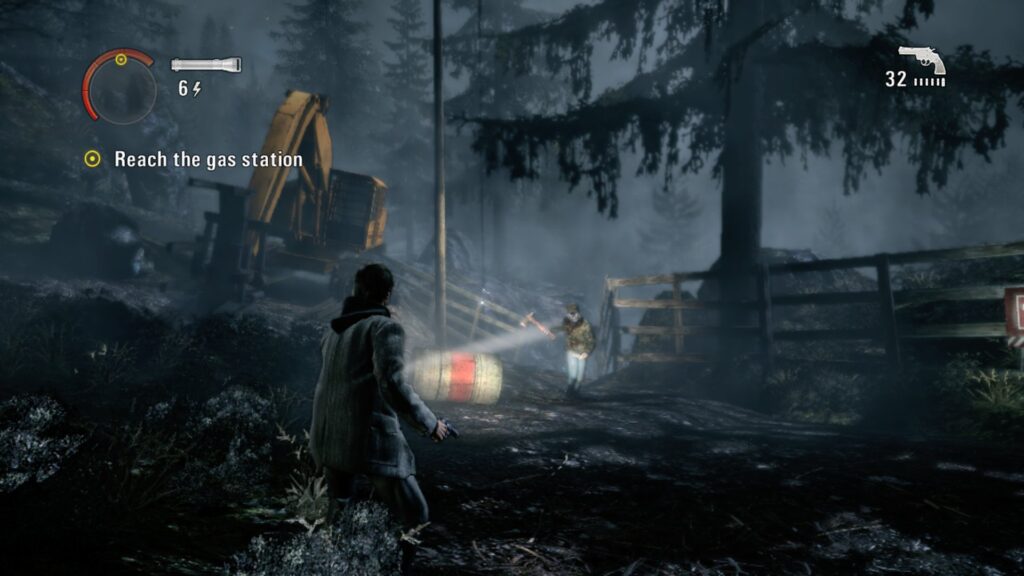
Combat is standard third-person action, but with the twist of Alan having to rely on light to remove the darkness from threats in order to damage them. Alan’s flashlight functions like an aiming reticule, and controls very tightly and smoothly. All he has to do is bathe enemies in light long enough to break through the darkness.
This creates an interesting combat dynamic. Alan can’t simply shoot at his targets when he first encounters them. This makes tussles in the woods play out in a frantic chase, where the hero has to fumble around to make his enemies vulnerable to attack, compounding suspense to the harrowing scenario.
It is a very simple and satisfying back and forth engagement, although it does overstay its welcome at times. Other than fighting possessed washing machines, tractors, or more guys; there is not a lot to Alan Wake‘s gameplay. There are many collectibles to find, but they do nothing.
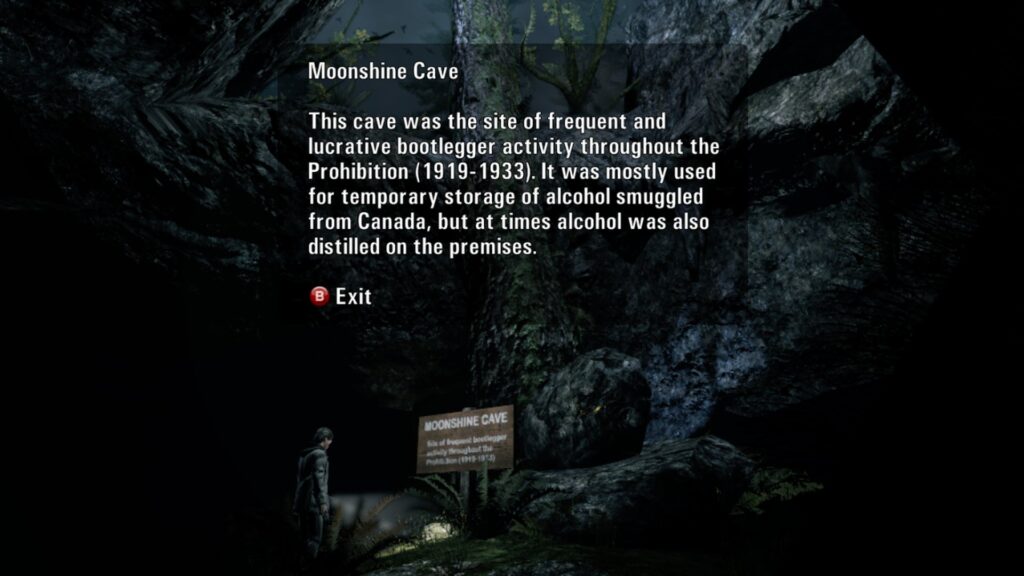
The main draw of Alan Wake is its unusual story, and the striking flavor it has. Wake’s narration has an infectious cadence, and his style of writing is very pulpy. The voice actor does such an excellent breathy and smoldering reading that it electrifies the gritty script.
Cutscenes are extensive, and have a cinematic flair that would become standard for most western developed games to come. Sweeping camera movements and stark, Hollywood-style lighting makes scenes come alive in ways the dated character models and stiff facial animations could not.
Alan Wake also makes extensive use of live action footage for the show within the game world that can be viewed on television sets. Even though they are shown on small screens, it is very obvious that they were shot with a low budget. The schlockiness of the Night Springs episodes have a quaint charm to their earnestness.
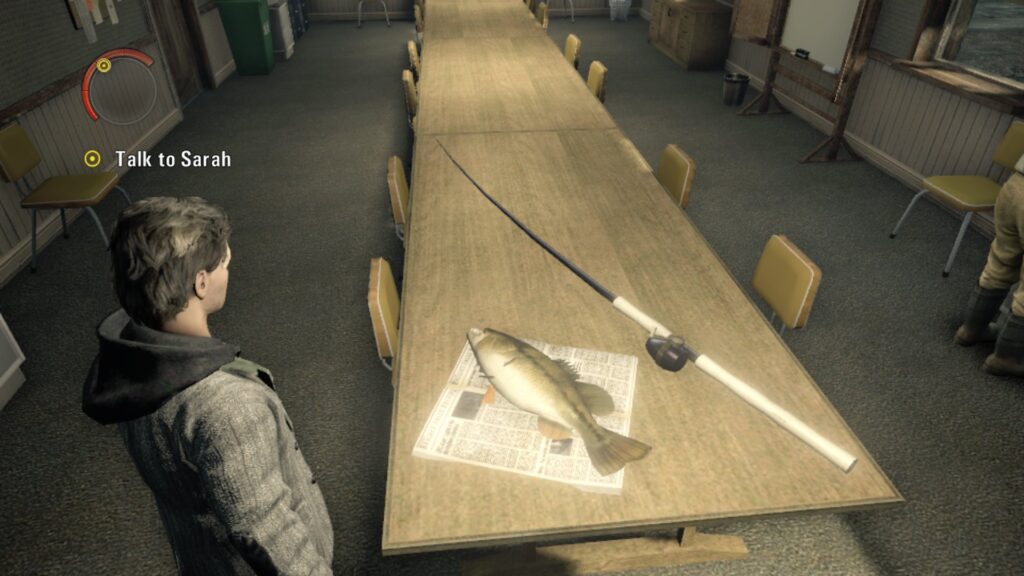
Animation quality during gameplay holds up nicely. Wake’s jacket has a very believable sway and flutter as he runs around town or in the woods. His movements are very responsive and quick; completely circumventing the sluggishness that plagued most western AAA third-person action games during the seventh generation.
The driving mechanics are fleshed out and feel on par with Grand Theft Auto V. There is not a lot of driving in Alan Wake, and it is often optional. It is possibly a remnant of its early design concept of when the game was originally envisioned as an open-world sandbox game.
The headlights of vehicles are obviously effective weapons against the darkness. Even more importantly, Remedy Entertainment saw to ensure that it felt really good to run over boys with Wake’s SUV. The heavy splattering sound and weighty thuds of a flock of Taken getting smeared across a farm, never gets old.
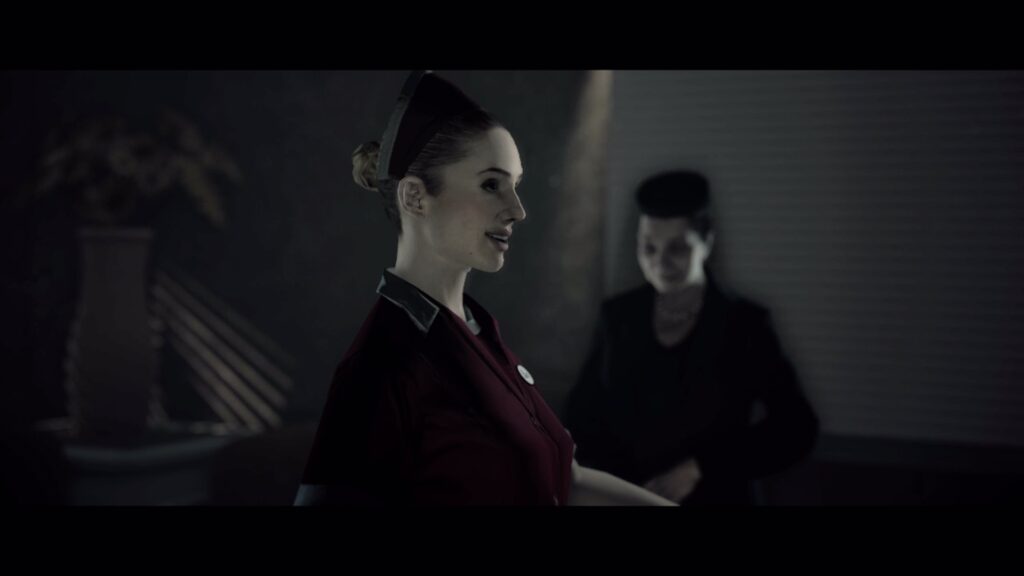
Disappointingly, the core experience involves bumbling around in the dark woods with the same weapons and fighting the same enemies. The set-pieces will vary and the scenario will call for different actions, but the setting and gameplay is one-note.
These chunks of horror-action are bookended with laid-back sequences of Wake during the day. He will get to explore a small area of Bright Falls without threats roaming, and is able to absorb some delicious and nutritious lore. There are some unique dialogues to hear that are missable, and it is worth trying to interact with everything possible during these reprieves.
While it didn’t need to be as ambitious as Deadly Premonition‘s attempt at full scale town, Alan Wake could use a bit more breathing room from the repetitive dark stages. This is still a more polished “Twin Peaks-like” experience than Swery’s, and it has to do with Remedy’s priorities. It may be focused to a fault, but at least it is focused.
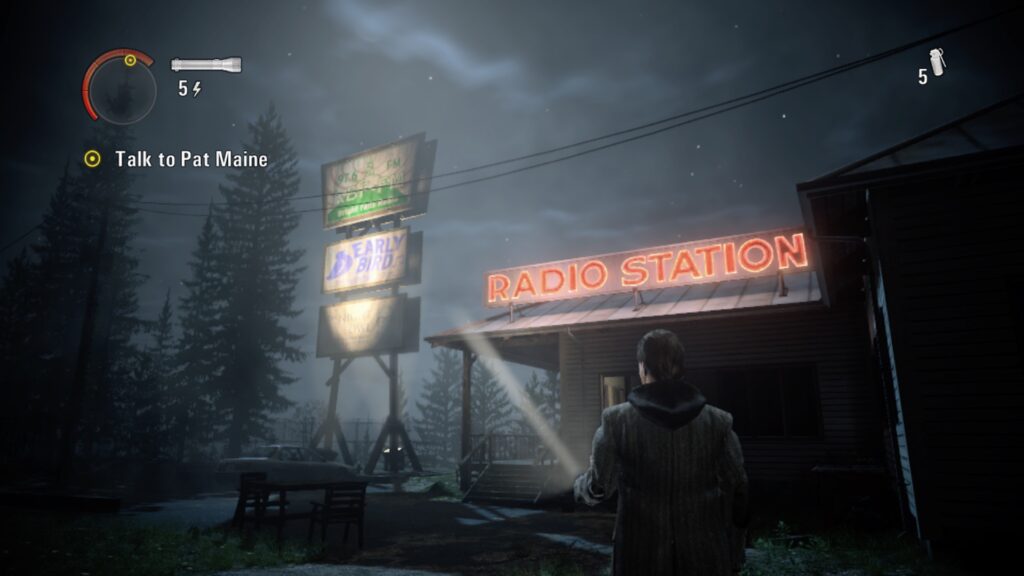
Resident Evil 4 came out five years prior to Alan Wake, and had changed third-person action games forever. What is disappointing is just how Alan Wake is technically the more advanced game, yet strips away design elements that would have made it a more fulfilling horror game.
Having an arbitrary cap on resources instead of having the player manage the resources themselves is an unnecessary lowering of the bar. An extremely limited load-out that offers no choice or consequence makes Alan Wake feel like a very casual experience, instead of one that is rewarding.
There is nothing to build upon, since the game ends with Wake being at the same level he is at the start. His health never increases, his weapons always reset between levels, and he gains no new mechanics. There should have been something to suggest some kind of growth. Even Leon S. Kennedy was able to expand his health and carrying capacity.
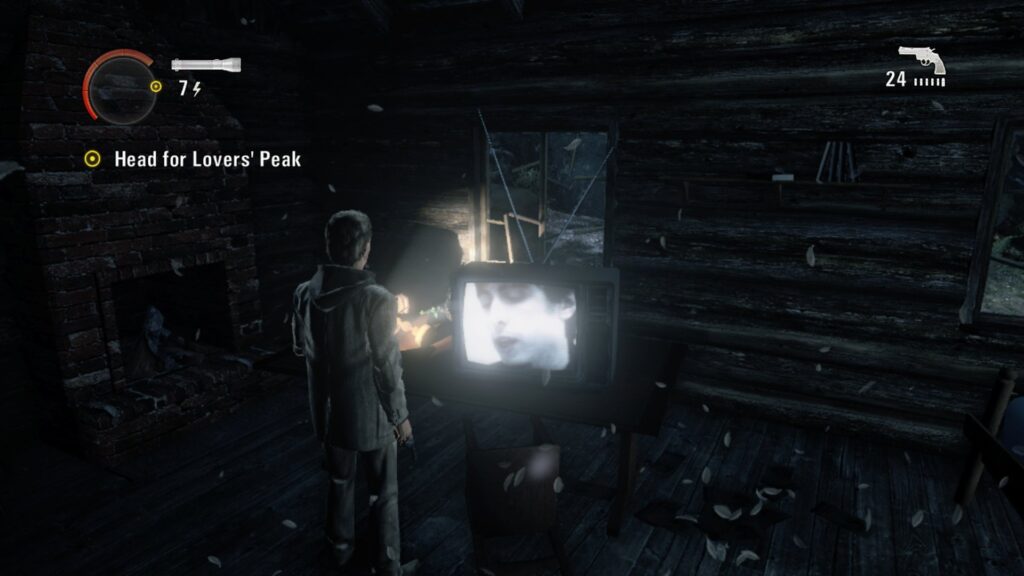
The game did not need to be the sand box game it almost became. Remedy made the right call by building their game to be a linear action game, because it played to their strengths. What it does need is a bit more variety and choice to its scenario.
Acquiring it is not going to cost an arm and a leg, and is now part of the backward compatible catalog on Xbox One. For $19.99 USD on Xbox Live Arcade, the adventure will last over ten hours, and has little replay value. If you’re going to play or replay it, it is best to experience it when the season calls for it.
Alan Wake is not the most scary horror game, but it is highly entertaining and engrossing. The ambiance and attention to detail make it an impressive production, over ten years later. The surreal and metaphysical narrative makes it an unconventional, yet fitting game to play during the fall and Halloween season.
Alan Wake was reviewed on Xbox One X using a personal copy. You can find additional information about Niche Gamer’s review/ethics policy here.